The "OLD" Winter Park Ski Train in Tales of the Jointed Track
- May 16, 2017, 7:47 p.m.
- |
- Public
When I was in Junior High School, I took the Ski Train up to Winter Park a few times. The Rio Grande operated it. It was a mixture of passenger FP7 A and B units. The cars were of the 1940 to 1950 era equipment. All were six axle “Heavyweight” cars. Some were Rio Grande, some were Santa Fe, some from other railroads. Train was about 10 to 15 cars long. It operated on Saturdays and Sundays, from late December to late March. The were all steam heated, provided by a steam generator car, and/or the steam generator equipped passenger designated units.
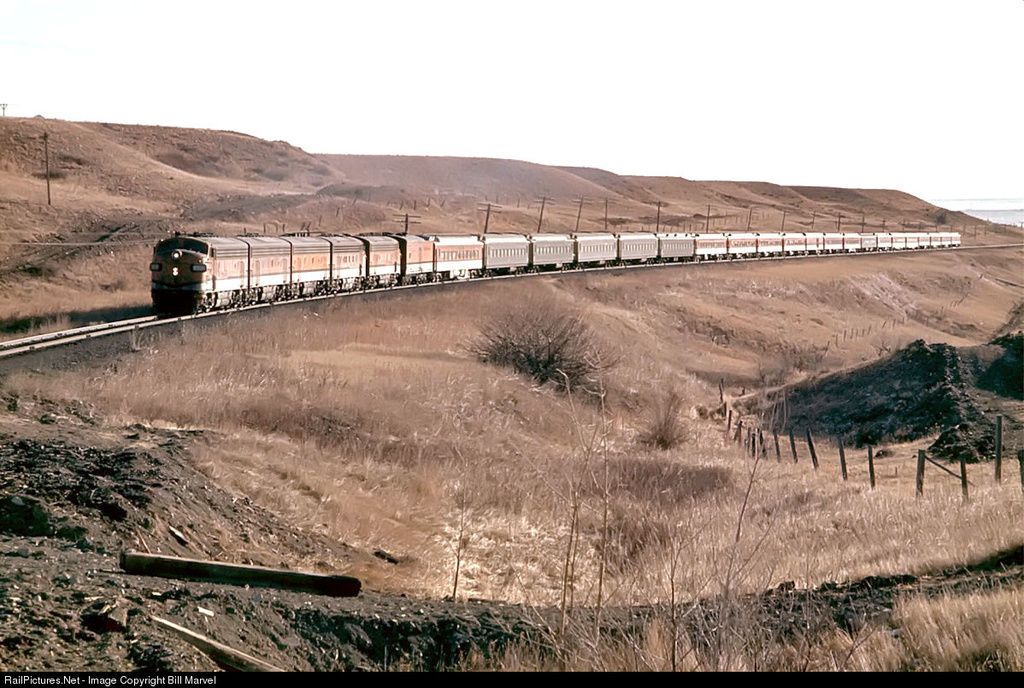
Winter Park Ski Train approaching Rocky siding. They are at the foot of the grade ready to head up the “BIG 10” curves and starting into the mountains.
The train left Denver Union Station, shortly after 730 am, behind the California Zephyr. It usually departed out of either Track 3 or 4. You dragged your skis and poles, boots, and whatever else, and loaded up in a passenger car. Seats were first come first served, but you had to have a ticket. Tickets were between $5.00 to $6.00 dollars. The skis and poles were placed in the vestibules at each end, in a Rube Goldberg fashion. Hey it is the 1960’s. The train arrived at Winter Park Ski area about 945-1000 am. You de-trained with all of your stuff. Thirty minutes later, the train was run down to Tabernash and turned on the Wye. The then returned and placed the train into the house track, so you could get your. lunch etc. About 315 pm, the train was backed out of the house track, and onto the main. The head end was on the bridge, just before the west portal of the Moffat tunnel. The whistle sounded 4 long blasts, every 15 minutes to call the skiers to the train. The Ski train departed at 400 pm, and if you weren’t on, well you found your own way home.
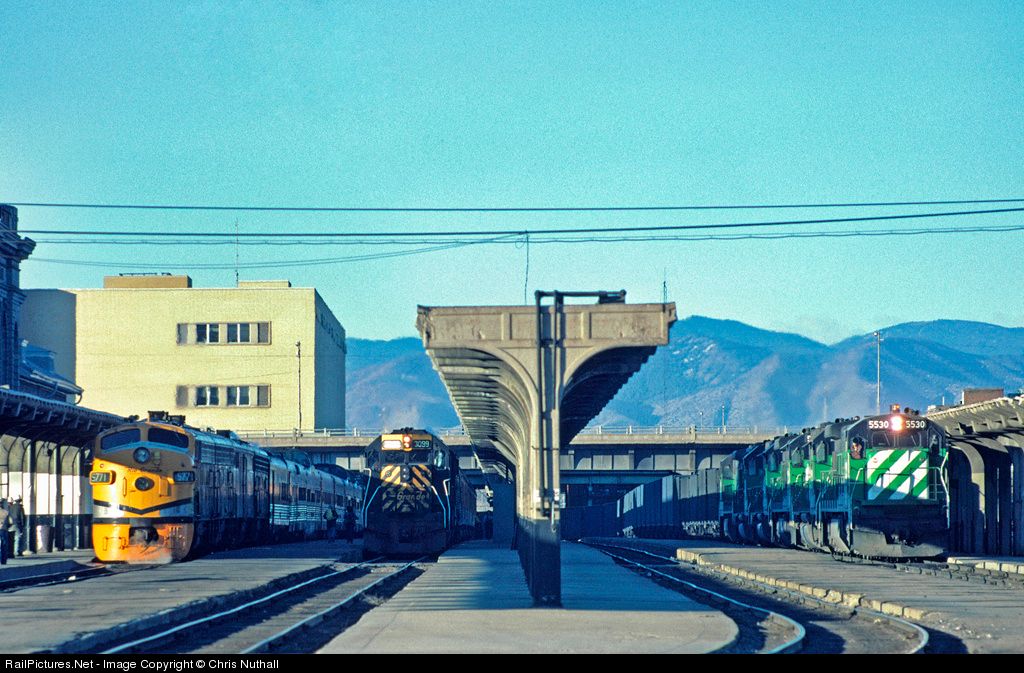
At Denver Union Station, a shot of (left to right) Track 1 the Rio Grande Zephyr track 2 the Rio Grande Ski Train with GP-40’s on the point and an empty BN coal train running down track 4. Santa Fe Joint-Line crew is operating to hand off to the BN at 31st St about a mile away.
Ski Train Winter 1964-65
I am in Junior High at this juncture. You may call it middle school, grades 7-8-9, depending on where you grew up. The Burke girls, who lived next door and I were taken down to the train station, and we boarded the Ski train. I enjoyed the ride, and rode in the vestibule most of the way up. That was when they let you, or looked the other way. the doors were locked and opened inward. You could open the vestibule door window, since the operated as one or split. 5 minutes out , before reaching East portal siding, the Conductor and or Brakeman, walked through warning to close all windows, and leave the vestibule, due to diesel exhaust in the tunnel. Twenty minutes of darkness, and the slowing of the train, reaching the West Portal and Winter Park Ski Area. The train brakes to a stop and we all get off with our gear (Wooden Skis, Leather lace up Ski boots, Poles, either bamboo shafts or metal with the leather webbing baskets). Onto the ticket window for a lift ticket, geez it is expensive, $4.75 for an all day Lift Ticket.
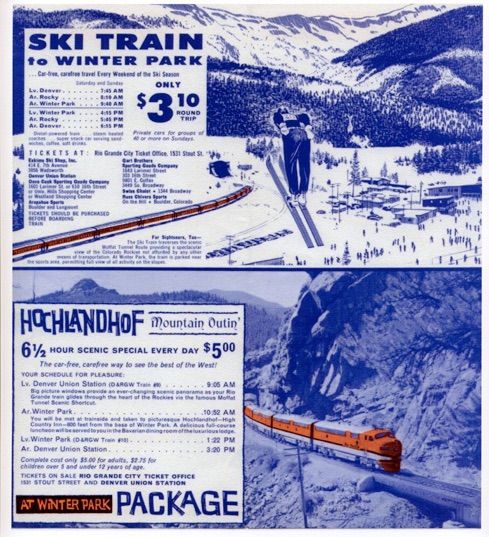 “D&RGW promotional poster for the Ski Train*
“D&RGW promotional poster for the Ski Train*
Winter Park House track D&RGW Railroad.
I skied hard, most of the morning and early afternoon. I had gone off on my own, because the girls, a) they didn’t like the harder runs and b) they hated taking the T-Bar and c) two of the three had boy friends so there was a lot of “rest breaks”. Stinky old girls !!! I head down to the Base area and to the train to grab my lunch. I take off the leather boots, and put my regular hiking boots on. Lunch is eaten and the time is almost 200 pm. HMMM, maybe I’ll walk the train, and really get near the engines. The house track parallels, the main line on the curve. It stubs before the bridge and it is about 25 feet away, or more in places to the Section gangs, can access when M.O.W. (Maintenance of Way) cars are spotted.
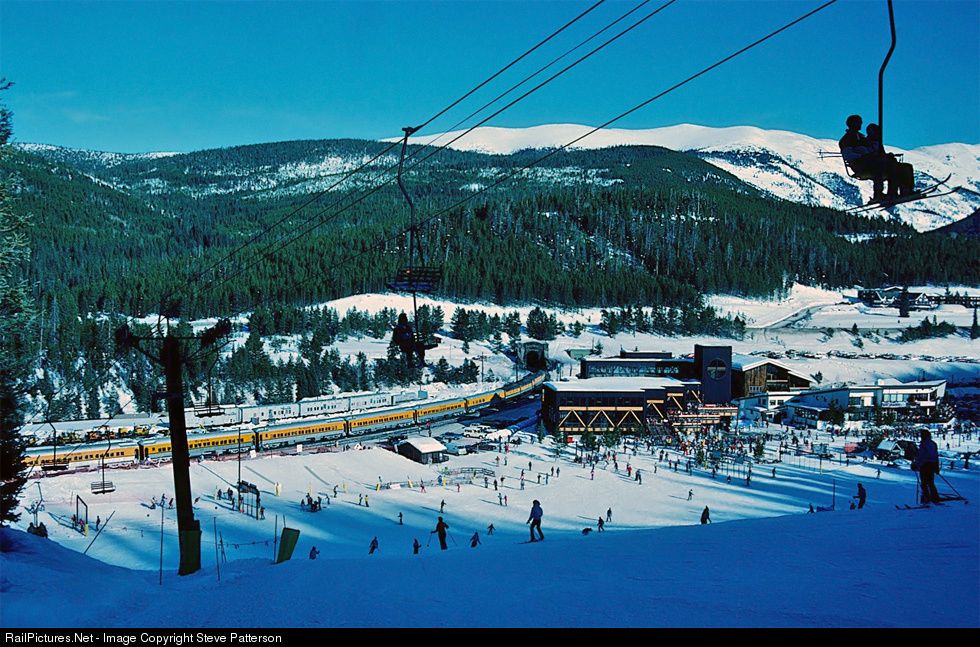
Winter Park circa 1984. The Ski train is eastbound, waiting for passengers to load
for the trip back to Denver. You can see M.O.W. equipment on the house track. The building to the far right of the picture, is the “original” Winter Park Ski Lodge.
I reach the head end, a Rio Grande FP-7 A-B-B-(Steam Generator car)-B consist. Four powered 1500 hp units, the steam generator car was an old Steam tender converted to help provide the majority of the steam heat. I believe there was two or three Vapor-Clarkson steam generators, and probably 10,000 to 12,000 water tank capacity. The FP-7 locomotives had steam generating equipment as well. One Vapor-Clarkson generator per unit and a 2000 gallon capacity water tank. The F’s were brought on-line while the train was moving. The Steam generator car provided, while in motion and to maintain, while stopped for long periods of time.
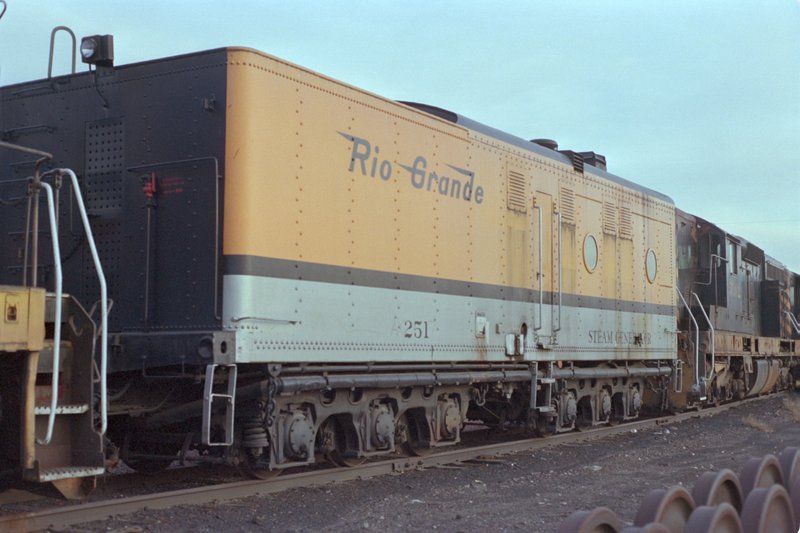
Rio Grande Steam generator car, made from a modified steam engine tender
I reach the head-end. look at the ladder that lead to the cab. I don’t want to get into trouble. I look at the nose of the lead FP-7A. Wisps of steam from the generators, smell of diesel and oil, whats not to like. The cab window rolls down and the Engineer says “Hey Kid, wanna come up here?” Wow did I !!! This is like winning a Million Dollars !! The side cab door open, “Climb up here, make sure ya got a good grip on the hand rails”. I climb up in the cab, and the whole train and engine crew are in there. The Conductor, the two Brakeman, the Engineer and the Fireman. The trainman are in the traditional three piece suit and caps. The Engine crew, Overalls and caps, dirty, lol hey gotta love us hogheads. Lunch boxes and thermoses on the floor. Most important during this “downtime”, is the Poker Game in the cab. The engineer plays the hand, and says “deal me out, I am gonna show this Kid around”. I was shown the Control stand, that held the throttle, dynamic brake handles, the reverser, and transition lever. The Automatic brake valve and Independent brake valve. The Gauges, and what each did, the Air Gauges for braking, and air storage pressure in the main reservoirs. The Amp gauge that showed power and dynamic brake values and output. The Speed Recorder, probably a BARCO or CHICAGO PNEUMATIC.
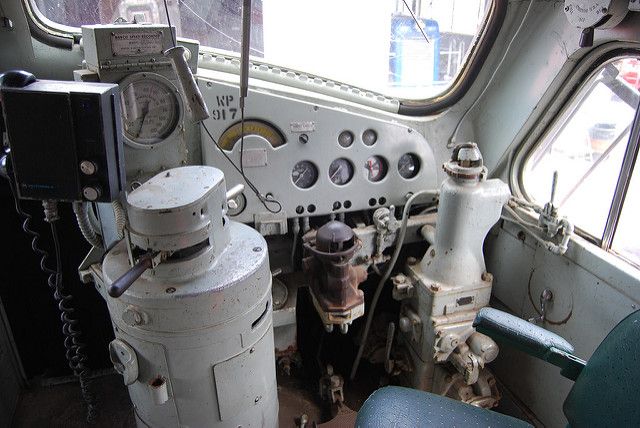
A picture of a Cab shot, engineer’s side, of a FP7A.
Left-Locomotive Controller The long lever is the
transition lever, for power and dynamic braking selection.
and “slot” is where the reverser is inserted.
Center- The rounded brownish looking thing is the
S-40-F Independent Brake Valve (Handle removed). The
“ring” on the upper face is the Actuation or Bail feature. Pressing down
with the independent brake valve handle will release the air brakes (locomotives only) Right- The tall grey thing is the D-24 Automatic brake Valve. This applies and releases the brakes on the train. Also is pressure maintaining equipped, will hold the set, without train line leakage to apply more air. Handle too is removed.
The Clock Face shape this is the speed recorder. The Rainbow shaped gauge is the AMP Meter, for power and Dynamic braking. The round circles are Air Gauges
(left) White needle Equalizing Reservoir Red Main reservoir, next White needle Brake pipe or Train line air pressure. Red needle Independent Brake cylinder pressure. Next is the Steam pressure gauge for the Steam Generator. Far Right is the Control air pressure. The odd shaped apparatus below the steam gauge is
the engine bell ringer valve. The round circles above the air gauges are
the wheel slip warning light, and the PCS (Pneumatic Control Switch) which activates when and emergency application occurs, regardless of origin. It cuts the power from the locomotive(s). The tall handled valve by the window is the sanding relay valve. Push forward, front sanders, back rear sanders depending on direction.
The odd shaped box above the sanders, top by the window is the headlight switch. Off-Dim-Bright.
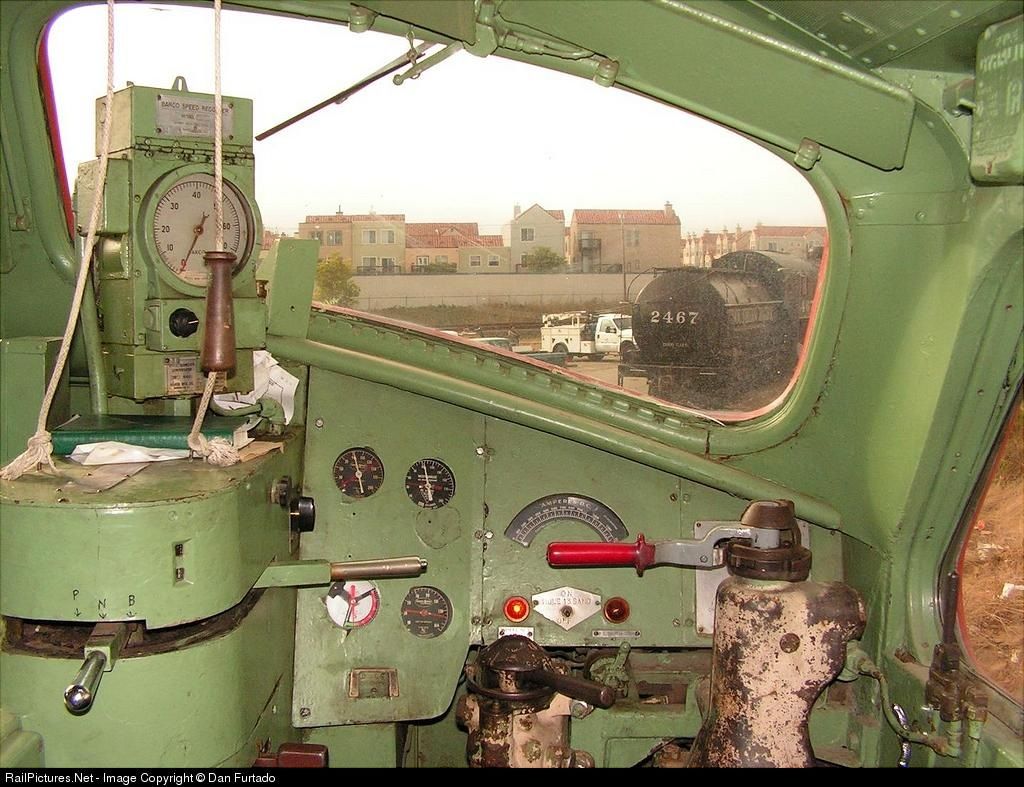
This is a E-9 Passenger Locomotive. I included this so
the reader can see the Brake Valve handles inserted
in the Independent and Automatic Brake Valves. Notice
as well, the Locomotive controller is different in
appearance. The brassy looking thing below the
throttle handle is the reverser.
I even got the tour of the engine room and steam generator. “Try not to get dirty, your mom won’t be too happy”. A lot was not understandable, like it is to those who aren’t railroaders, and reading this.
A bunch of time has transpired, since that time in the early to mid sixties. My 40 years as a Railroad Engineer, just like the crew I visited with in the house track. I was prior rights Santa Fe, but I interacted with many a Rio Grande crew, on the road. Like the wisps of steam vapor, all is gone, but memories.



Leslie Bruce ⋅ May 16, 2017
Very interesting!
MageB ⋅ May 21, 2017
But Oh, what fun. What magic. Thank you for sharing this with us.